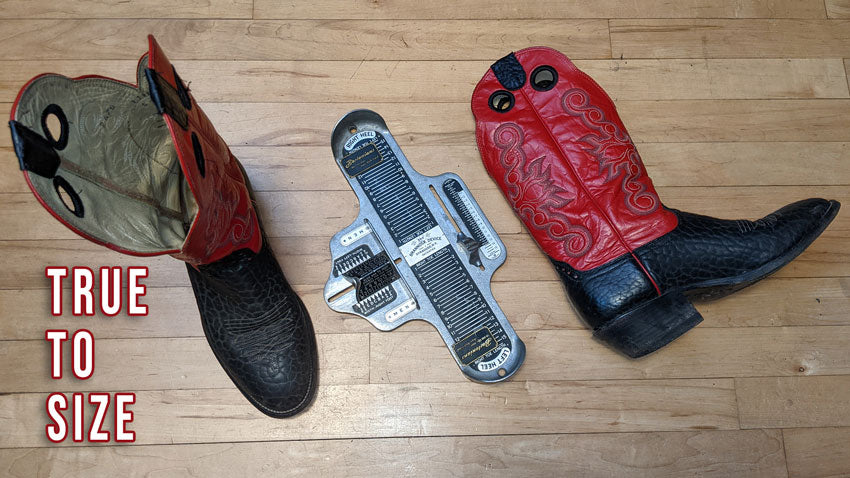When it comes to shopping for cowboy boots or shoes, one of the most important things to consider is whether or not they are "true to size." This term refers to whether or not the boots fit the size that you have been measured for or fitted for, either through a Brannock device or by trying on different sizes at a store. But what does it really mean for a boot to be true to size, and why does it matter? In this post, we will explore the meaning of true to size and why it is important for your comfort and satisfaction when it comes to footwear.
What Is True to Size?
The term "true to size" simply means that the boot fits the size that you have been measured for or fitted for. For example, if you have been measured as a size 10 with a B width, then a boot that is labeled as a size 10 with a B width should fit you perfectly. The term "true to size" is used to indicate that the boot is accurately sized and that you can expect it to fit as expected based on your measurements.

Why Does True to Size Matter?
When you are shopping for boots, it is important to know whether or not they are true to size because this will affect how they fit and feel on your feet. Boots that are too small can cause discomfort, blisters, and even long-term foot problems like bunions or hammertoes. Boots that are too big can cause your foot to slide around, which can also lead to blisters and other discomfort.
In addition to the physical discomfort that can come from boots that are not true to size, there is also the issue of customer satisfaction. When you buy a pair of boots, you want them to fit well and feel comfortable. If the boots are not true to size, you may feel disappointed or frustrated with your purchase. This can lead to negative reviews, returns, and ultimately, loss of business for the brand.
How to Determine if Shoes Are True to Size
There are a few different ways to determine if shoes are true to size. The most accurate way is to have your feet measured using a Brannock device. This device measures both the length and width of your foot and provides you with a precise measurement that you can use when shopping for shoes.
If you do not have access to a Brannock device, you can also try on different sizes of boots at a store to determine your size. It is important to try on both shoes and to walk around in them to get a feel for how they fit. Keep in mind that different brands may have slightly different sizing, so it is always a good idea to try on several sizes before making a purchase.
There are also ways of measuring your feet without a Brannock device to get an idea of what your true size might be. This should only be used as a last resort since there are may opportunities for mistakes when measuring yourself. See this post and chart to learn more about finding out what your true size might be.
Another option is to consult online reviews or customer feedback to see how other people have found the sizing of the shoe you are interested in. Many brands also provide sizing charts that you can use to compare your measurements to their recommended sizes.
What to Do If Shoes Are Not True to Size
If you purchase a pair of boots and find that they are not true to size, there are a few options. First, you can try exchanging them for a different size if the store or brand offers this option. If you are purchasing online, many brands offer free returns or exchanges for sizing issues.
If you are unable to exchange the boots for a better size, there are a few things you can try to make them fit better. One option is to add insoles to fill any gaps or provide extra cushioning. However, if the boots are simply too small or too big, it may be best to return them and look for a different style or brand that offers true to size sizing.

